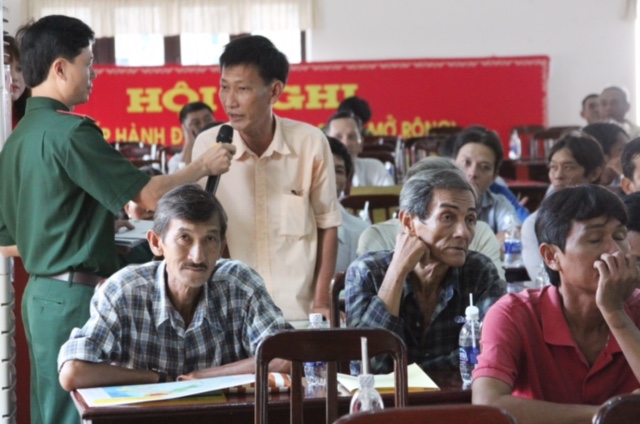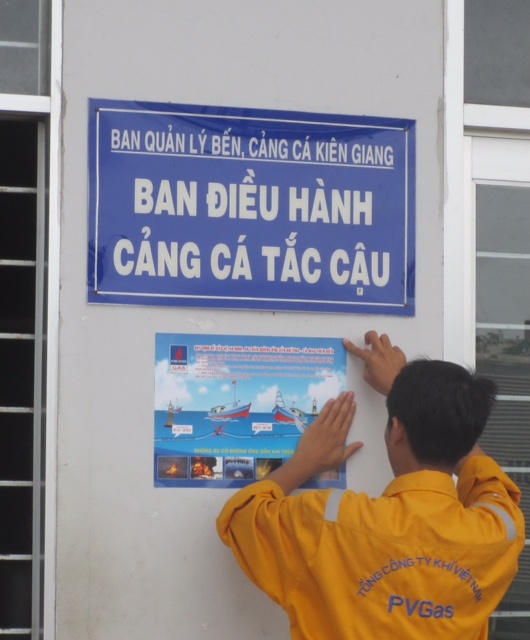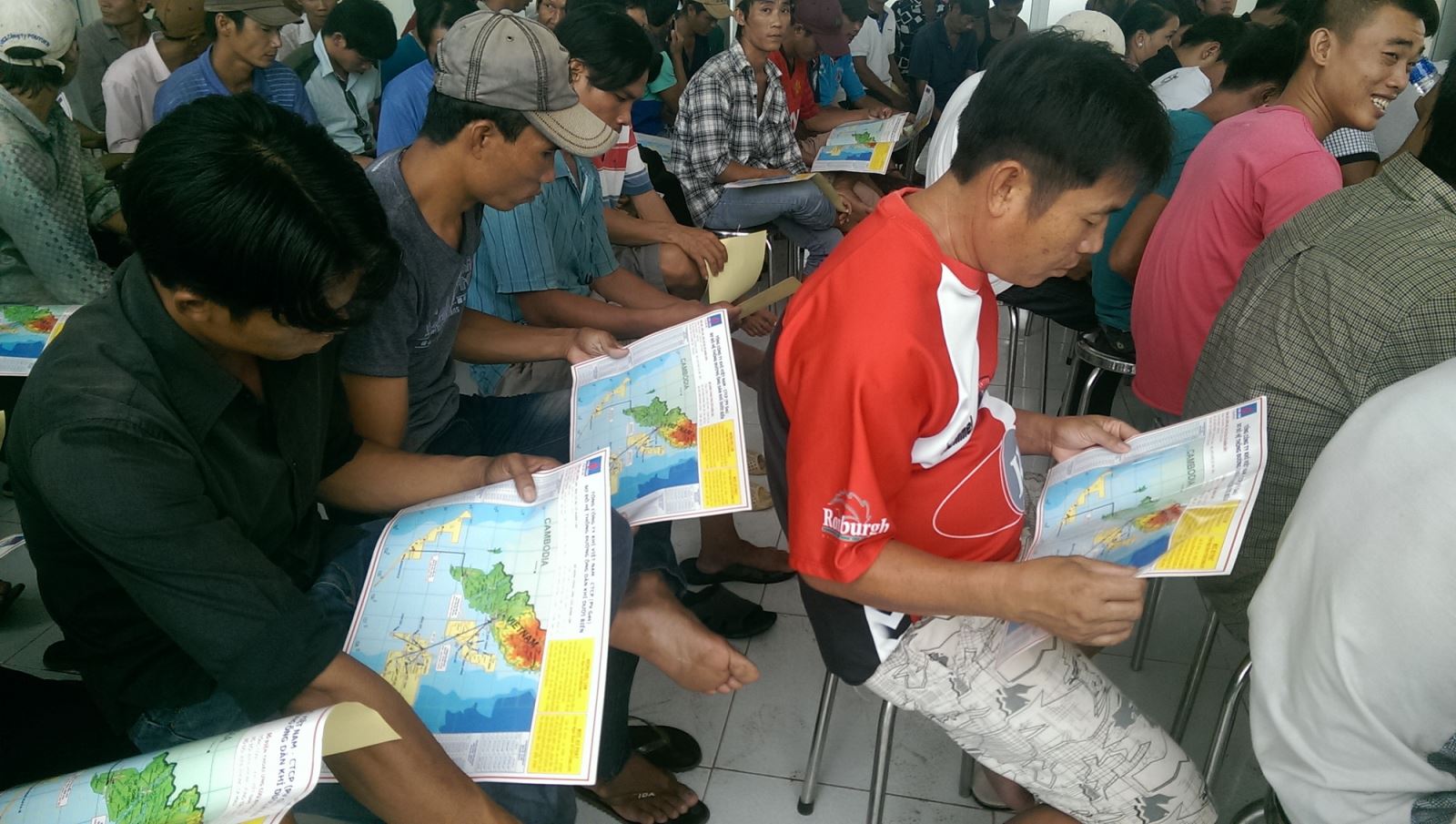Noteworthy accomplishments from an initiative in protecting gas pipelines
From a highly appreciated initiative in PetroVietnam Oil and Gas Corporation (PetroVietnam Gas) and after the two-year implementation, PV Gas Ca Mau, a subsidiary of PetroVietnam Gas Joint Stock Corporation (PVGas), has been developing an effective and practical plan to protect the subsea gas pipelines.

The natural gas pipeline systems have particular characteristics in their routes such as running through residential areas or stretching across different terrains from mountains to seabed, where there is a challenge for fishermen to identify the pipelines on the sea. Now, the operation and management of the whole three pipeline systems crossing over 1,000 km in the Southern region of Vietnam’s Eastern Sea are undertaken by the Subsidiaries of PV Gas (a member of PetroVietnam). These systems are laid on the seabed to transport natural gas from drilling rigs to shore and supply more than 10 billion Sm3 of natural gas per annum for local customers, contribute to more than 40% of the country’s total electricity production, 80% of the total potassium nitrate production as well as meet other demands for industrial and civil purposes. The continuous supply of this precious natural gas from the sea to onshore customers play an absolutely decisive role for the Energy and Food security of the Country.
A requirement to find a solution protecting the subsea gas pipelines.
Thanks to the increasingly enhanced workmanship of the engineers and technicians of PV Gas as well as the application of advanced technologies in the operation and maintenance activities, the gas pipeline systems of PV Gas have been operated in a continuous and safe manner in the last twenty years. However, it should be noticed that up to 50% of the accidents in Gas industry recorded around the world related to external damages/third parties, and these types of accidents were beyond the control of the Owner and PV GAS as well.
According to the results of periodical survey for subsea gas pipelines conducted by R.O.V (Remote Operated Vehicle), PV Gas has found a lot of fishing nets and ship anchors impacted the subsea pipelines. In these cases, the anti-corrosion coatings of the pipelines were damaged and the pipelines deformed as well. It caused localized defects along the offshore pipeline that threaten the integrity of the pipelines and reduced the safety of the system. At the damaged areas, PV Gas had to spend tens of billions of Vietnam dongs repairing defects on the subsea pipelines, which was a financial loss as well as a waste of time and effort.
Having recognized the potential external threats to the subsea pipelines, PV Gas has employed numerous of methods to reduce the risk level such as cooperating with relevant agencies to conduct communication programs with an aim to raising awareness of fishermen, patrolling along the subsea pipelines, distributing leaflets, organizing training courses and so on. However, the damages along the subsea pipelines were still recorded. The challenge for PV Gas was to find out a practical solution to minimize the risk of external damages at the lowest cost and practical to fishermen.

Initiative in installing pipeline system map into positioning equipment of fishing vessels came into existence
Mr. Thai Doan An, Head of Safety and Environment Department of PV Gas Ca Mau, said “Finding a way to give instruction to thousands of fishing vessels operating on the sea in areas where gas pipelines are crossing has always been a concern for any subsidiaries of PV GAS being responsible for the operation and management a pipeline system. The fact that PV Gas Camau has found out a solution stemmed from meetings and dialogues with fishermen, vessel owners, local authorities and Border Soldiers to learn about the fishing activities on the sea”. The engineers of PV Gas Ca Mau focused on the information that fishing vessels were equipped with positioning equipment to locate fishing areas, maritime zones and boundaries as well as co-ordinates of other vessels. They also learned that the fishing vessels had to cross Border Checkpoints before going out to sea. Officers at these checkpoints had to check documents brought along and conditions of the vessels before allowing them to head for the open sea. Suddenly, a simple idea came up. That was to install positioning co-ordinates of PM3 - Ca Mau offshore gas pipeline on the existing positioning equipment on the fishing vessels. When the fishing vessels approached the pipeline areas, fishermen would be notified the presence of pipelines so that they wouldn't perform any activities that could harm the pipeline system. The installation can be done by the officers at the Border Checkpoints who know fishing vessels very well. From this finding, PV Gas Ca Mau discussed with the Border Checkpoints to make a large-scale plan, with continuously implemented installation of co-ordinates of PM3 - Ca Mau offshore gas pipeline into the positioning equipment on the fishing vessels and daily control of the implementation. When a fishing vessel arrives to a Border Checkpoint, officers will post a detailed guideline of the vessel and install co-ordinates of PM3 - Ca Mau offshore gas pipelines on its positioning equipment to create a "living pipeline system map" that continuously monitors any activities of the vessel. At the same time, PV Gas Ca Mau continuously conducts propagation and communication programs to disseminate regulations on protecting the safety of gas pipelines so that the fishermen will not drop anchors or catch fish by blast fishing and electrofishing in the proximity of pipelines. Propagation and communication activities can be carried out at site with presence of the invited fishing households or by some officers of the company coming to visit every fishing households. The propagation and communication activities appears to be beneficial for the fishermen once they are aware of abiding by the regulations, because the prevention of gas pipelines from any damage will not only ensure the country’s energy security, but also help the fishermen to avoid potential problems such as cutting away anchors or fishing nets when they are wrapped around pipelines as well as prevent life-threatening consequences if the pipeline is cracked, leading to a gas leak and explosion at sea. After the successful installation of the co-ordinates for the fishing vessels, the Border officers will provide a stamp on the directory of the crew members and sign for confirmation. This is the basis to handle violations if the fishing vessels break the regulations deliberately.
In order to implement the plan comprehensively across the Southwestern part of the Eastern Sea, PV Gas Ca Mau has approved “The Plan of Cooperating” with 10 Border Posts managing a great number of fishing vessels in Ca Mau Province and Kien Giang Province, and has implemented the Cooperation Program with Border Posts of the Southwestern provinces of Vietnam. The plan and program clearly indicate implementation procedures and responsibilities of relevant parties. So far, 10,729 of the total 14,000 fishing vessels (with more than 90 horsepower motors) from the eight Southwestern provinces have been installed positioning coordinates of PM3 Ca Mau offshore gas pipeline and disseminated relevant safety regulations. It is anticipated that PV Gas Ca Mau will cooperate with the Border Posts to finish the installation for the remaining fishing vessels as well as seasonal new fishing vessels in 2015. The list of fishing vessels with identification numbers and other information are entered into the database and uploaded to the Internet for access at any time. The database is easily managed and shared with other Companies such as PV Gas Vietnam, PetroVietnam Gas South East Transmission Company (PV Gas SE), Nam Con Son Pipeline Company (NCSP) and so on.
This initiative was highly appreciated by the Council of Science and Technology of PV Gas) and popularized among other Corporations and Companies of PetroVietnam in mid-2013. Other Companies like PV Gas SE and NCSP visted PV Gas Camau to learn about the model and then introduced it for coastal provinces from the Southeastern region to Da Nang. Moreover, this initiative is being considered by the Emergency Response Center and Safety-Health-Environment Division of PetroVietnam for applying in the management of offshore structures in Vietnam like mobile drilling rigs, floating storage and offloading (FSO) units, transport vessels, barges and so on.

The silent efforts of dedicated officers for the safety of the Oil and Gas industry have been recognized through the daily practical activities in the beloved territorial sea of the Country.
